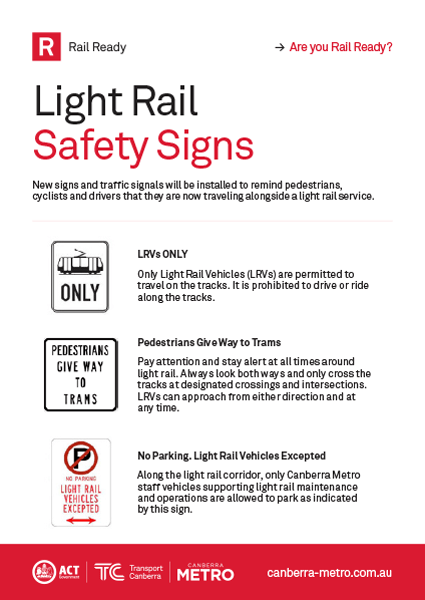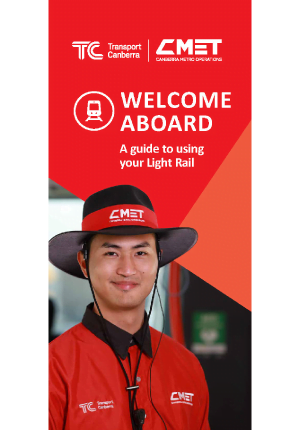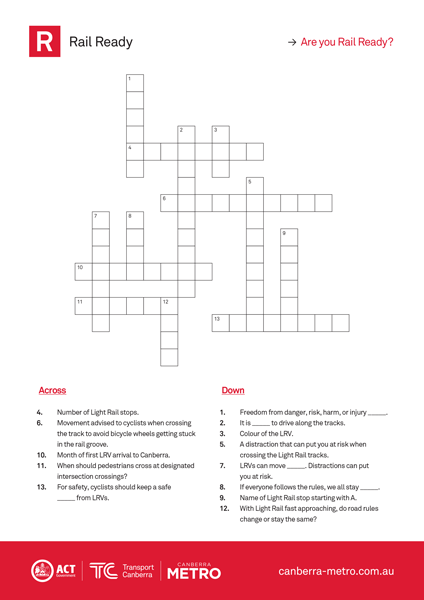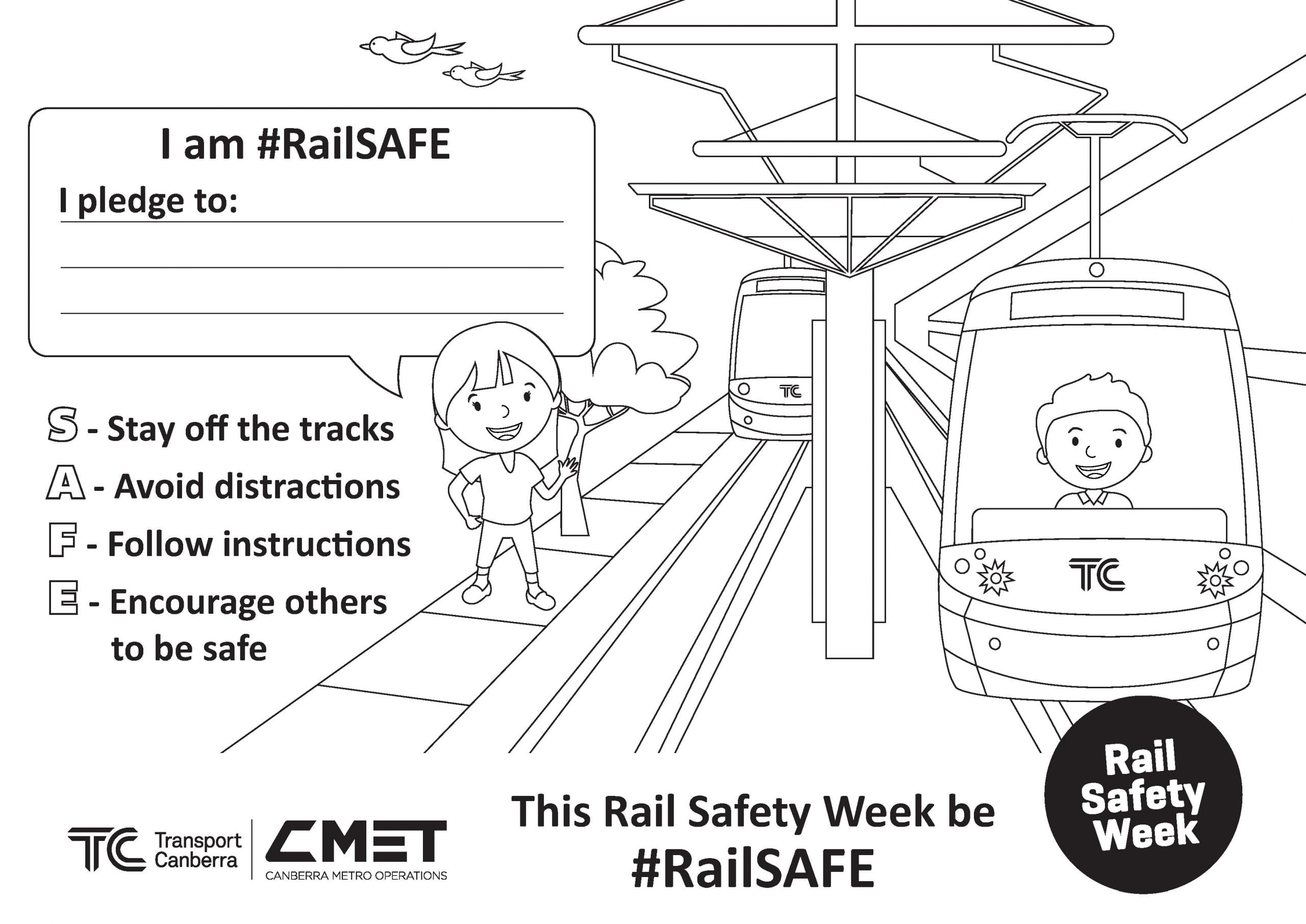The safety of our customers, community and staff is our number one priority.
To ensure that everyone enjoys an exceptional experience on our Light Rail, there are a number of things you can do to ensure your journey is enjoyable and safe.
When accessing light rail stops remember to only cross the road and tracks at designated crossings and watch out for LRVs coming from both directions.
When waiting at a stop, stand back from the tracks behind the yellow line.
Please keep the doorways clear and wait for all customers to exit before you board.
Allow passengers with mobility impairment or wheelchairs to board first.
If travelling with young children, hold their hand whilst waiting at the stop and when getting on and off the LRV.
If there is a seat available, even if you are only taking a short trip, please use it.
Once on board, walk into the LRV to allow others to board promptly and remember to tap on. Do not block the doors or aisles with prams, bags or bikes.
Stand clear of the doors. If you need the doors re-opened at the stop, press the yellow button on the door.
Bikes can be carried on LRVs and must board through either of the double doors, which are clearly marked with a bicycle image.
All bikes must be placed into the allocated bicycle rack which is clearly marked on the LRV floor.
The racks are designed to accommodate two-wheel, single-seat bikes.
A fatbike that uses oversized tyres, typically 3.8 in (97 mm) or larger and rims 2.16 in (55 mm) or wider are not permitted.
A maximum of four bike racks are available and cannot be reserved, spaces are on a first come first served basis.
CMET is not liable for any loss or damage to bicycles that are placed in the racks on board LRVs.
E-scooters that meet our carriage requirements are permitted on the light rail providing they can be safely secured, noting that CMET is not liable for any loss or damage to E-scooters that are taken on board LRVs. Shared E-scooters, such as Neuron Mobility, cannot be brought on board LRVs.
E-scooters must meet the following requirements to be carried on board LRVs:
- Be no more than 1250mm in length x 700mm in width x 1350mm in height.
- The maximum weight of your E-scooter must not exceed 25 kilograms.
- Must be electric-powered (petrol-powered is not permitted).
At the stop keep your pram parallel (sideways) to the tracks, behind the yellow line. Be mindful of slopes and high winds which can cause your pram to roll. Always apply the brakes and restrain your child in the pram while on the stop and on-board the LRV. Board and exit the LRV with the pram in front of you, lifting the front wheels over the small gap.
Here are a few simple tips when travelling with children.
- If travelling with young children on the light rail, hold their hand while waiting at the stop and getting on and off the Light Rail Vehicle (LRV).
- When accessing light rail stops remember to only cross the road and tracks at designated crossings and watch out for LRVs coming from both directions.
- When waiting at a stop, stand back from the tracks behind the yellow line.
- Please keep the doorways clear and wait for all customers to exit before you board.
Do you know what to do if you become separated onboard or at a light rail stop?
- Don’t panic!
- Press the emergency help button located at every door or on the platform.
- Know your plan before you travel. Who is staying put and who is moving to meet back.
- Children should know who to approach: CMET staff, a parent with a child or someone in a uniform.
Motorised Mobility Aids Sizing
- The maximum total laden weight allowed for access onto LRVs is 300kg. This refers to the combined weight of the device with the user, any luggage and added accessories.
- The total height when the user is seated should be no more than 1500mm.
- The device must fit within a space of length 1300mm by width 800mm.
- The device also needs to be manoeuvrable and should be able to turn 180 degrees within an area 2070mm x 1540mm.
Travelling with a mobility aid onboard
- Mobility aids must not obstruct the thoroughfare of passengers onboard the LRV.
- Passengers travelling who require the use of a mobility aid are encouraged to utilise the seat belt in the wheelchair accessible area to ensure their safety.
- Passengers are encouraged to place their mobility aid in the direction of travel in the event of an emergency brake.
- CMET employees may request passengers to manoeuvre their mobility aid into a safer and more secure location if it poses a risk and may impact the safety or comfort of other passengers
Remember to hold on at all times, particularly when the LRV first moves away from the stop. The best thing to do is take a seat if one is available or hold onto a handrail or strap as the light rail vehicle may brake unexpectedly.
Remove bulky bags from your back so other passengers can easily move around.
Place bags on your lap or under the seat if you are seated or between your feet if you are standing. Avoid stowing bags and other items on seats.
All LRVs have assigned red priority seats. Please be courteous to your fellow passengers and offer your seat to the elderly, pregnant women and people who have impaired mobility.
When standing in the LRV you always need to maintain your balance and footing. The best position that gives you a solid base is to keep your feet shoulder-width apart.
It is highly suggested that while standing you utilise the safety handles and poles to help keep your balance and ensure your safety.
It is always good to have an eye towards the windows so you can see what is happening outside and be prepared for any movement.
The LRVs have passenger information displays which show the next stops, and also public announcements to alert passengers about the next stop.
The LRV will slow down and brake as it approaches every stop. Make sure you are ready to exit and try to move closer to a door before your stop while holding on. If the doors close before you have exited, press the yellow button on the door to alert the driver that you still need to exit.
Once off the LRV, remember to ‘tap off’ with your MyWay+ card at the platform validator.
Please use the designated crossing points to cross the tracks and road when leaving the stop.
Assistance animals are able to travel on a lead in the LRV.
Other animals can travel subject to the following conditions:
- Small animals can travel on Light Rail Vehicles, but they must be able to be carried in a closed carrier.
- Non-assistance dogs on leads are not permitted.
- Guide dogs, hearing guide dogs or guide dogs in training can travel on all public transport services.
Riding the light rail should be a pleasant experience for everyone.
Rollerblades, rollerskates, skateboards, scooters, unicycles or similar wheeled devices are not to be used whilst on the LRV or at each stop.
Examples of items prohibited from carriage on LRVs include:
- Shopping Trolleys
- Beach Cart/Wagon
- Any petrol-powered wheeled device
- Oversized household appliances (fridges, washers)
- Luggage that is unable to be safely managed by passengers and are obstructing passenger thoroughfare
- Flammable liquids and gases (petrol, kerosene, LPG, propane)
- Firearms
- Explosives
- Corrosive or acidic chemicals
- Any items that cannot fit under your seat or held on your lap
The following is not considered acceptable behaviour on board an LRV
- Putting feet on a seat
- Spitting
- Eating or drinking on an LRV
- Littering
- Using offensive language
- Fighting or offensive behaviour
- Obstruction to a door or seat
All stops and every LRV have CCTV cameras installed for your safety and security.
In case of an emergency, doors can be opened manually once the LRV has stopped moving.
If you are concerned about your safety or the safety of others, please use the Emergency Help Point on platforms and on board LRVs to contact staff. Emergency help points are located onboard all light rail vehicles (LRV) at each door and wheelchair accessible space, and at light rail stops.
Help us make the light rail a safe and pleasant experience for everyone by reporting incidents, unattended items or suspicious behaviour to any available staff. Emergency help points are located at every stop and on board every LRV, alternatively call 000 in an emergency or contact 131 444 to report suspicious activity.
Customer Service Officers, security staff and police will be travelling throughout the network at stops and on board, and are there to help.
Our staff are committed to ensure that every passenger enjoys an exceptional travel experience. We have a dedicated team of Drivers and Customer Service Officers who have undergone an intensive training program to prepare for operations. Your driver’s number one responsibility is getting you to your destination safely. Please do not attempt to enter the driver’s cabin. If you need urgent assistance, please use the Emergency Help Point on board the light rail vehicle or at the stop to contact a staff member.
Our Customer Service Officers will be travelling throughout the network on selected services to assist passengers at stops and on board. Our staff are there to help! If you need any assistance with ticketing, local information, connecting services please ask.
Don’t forget you must have a valid ticket or MyWay card to travel on the light rail. Penalties do apply.











